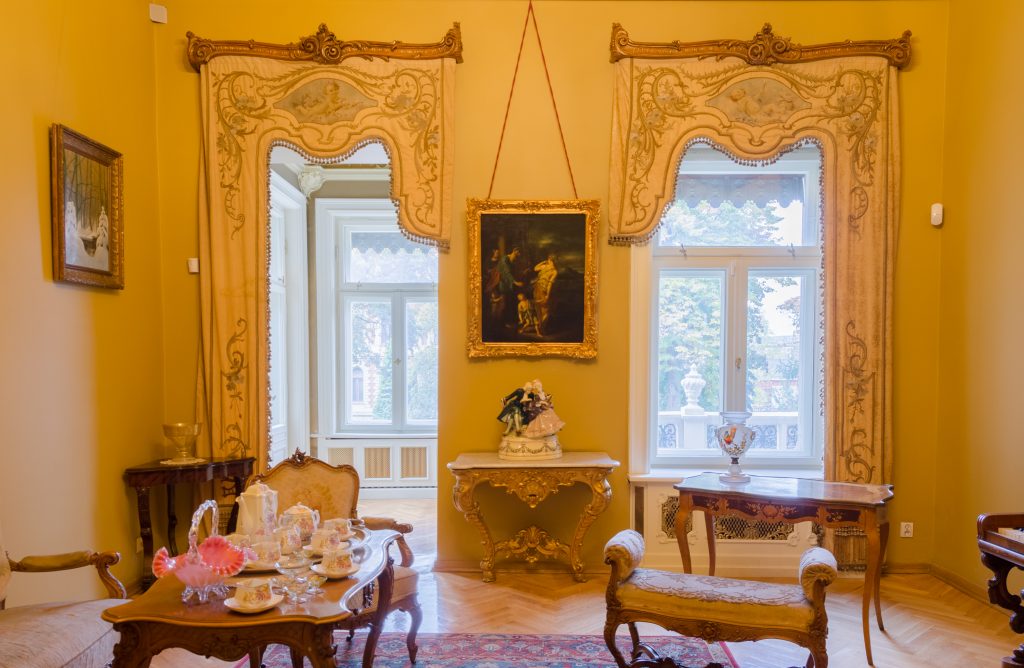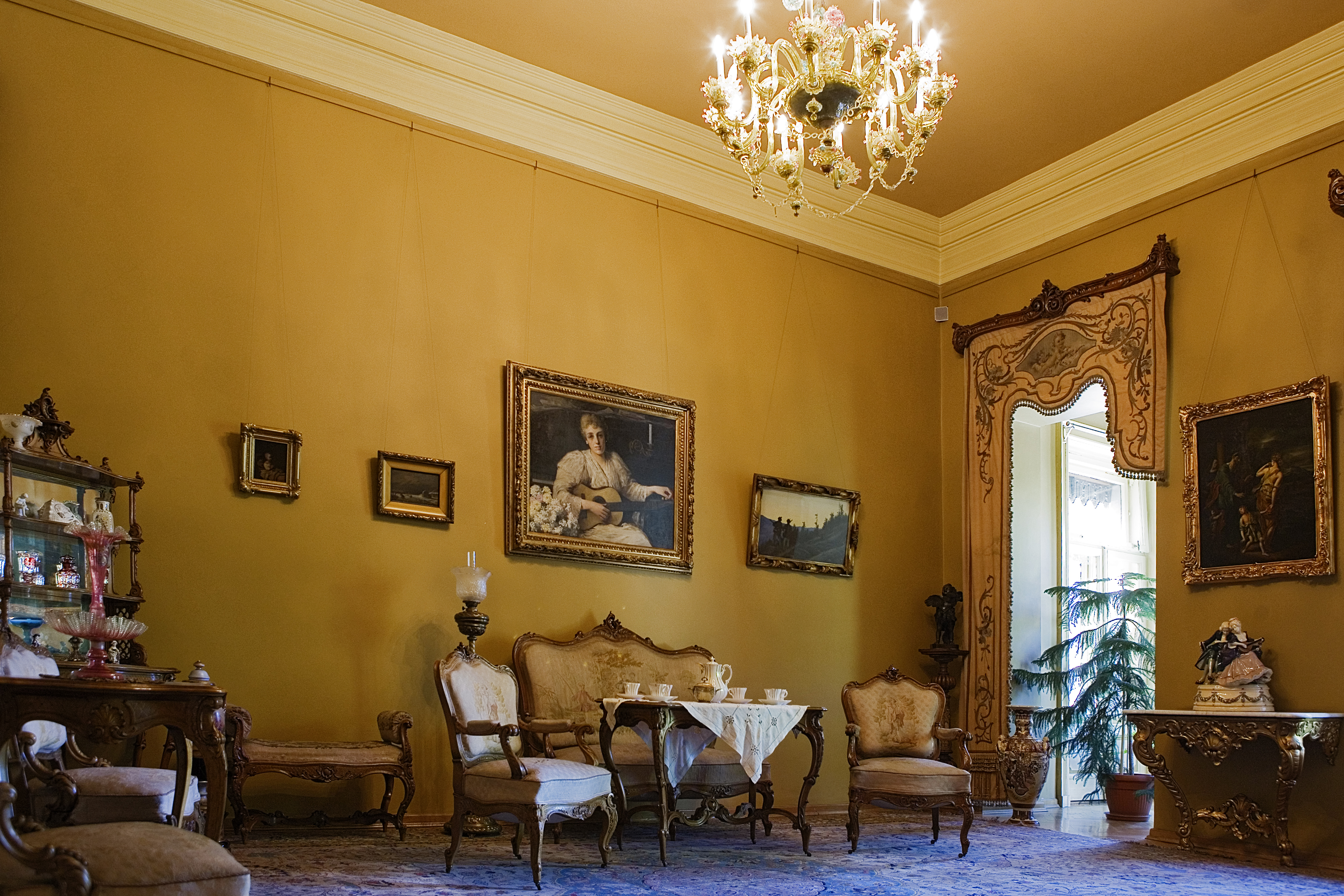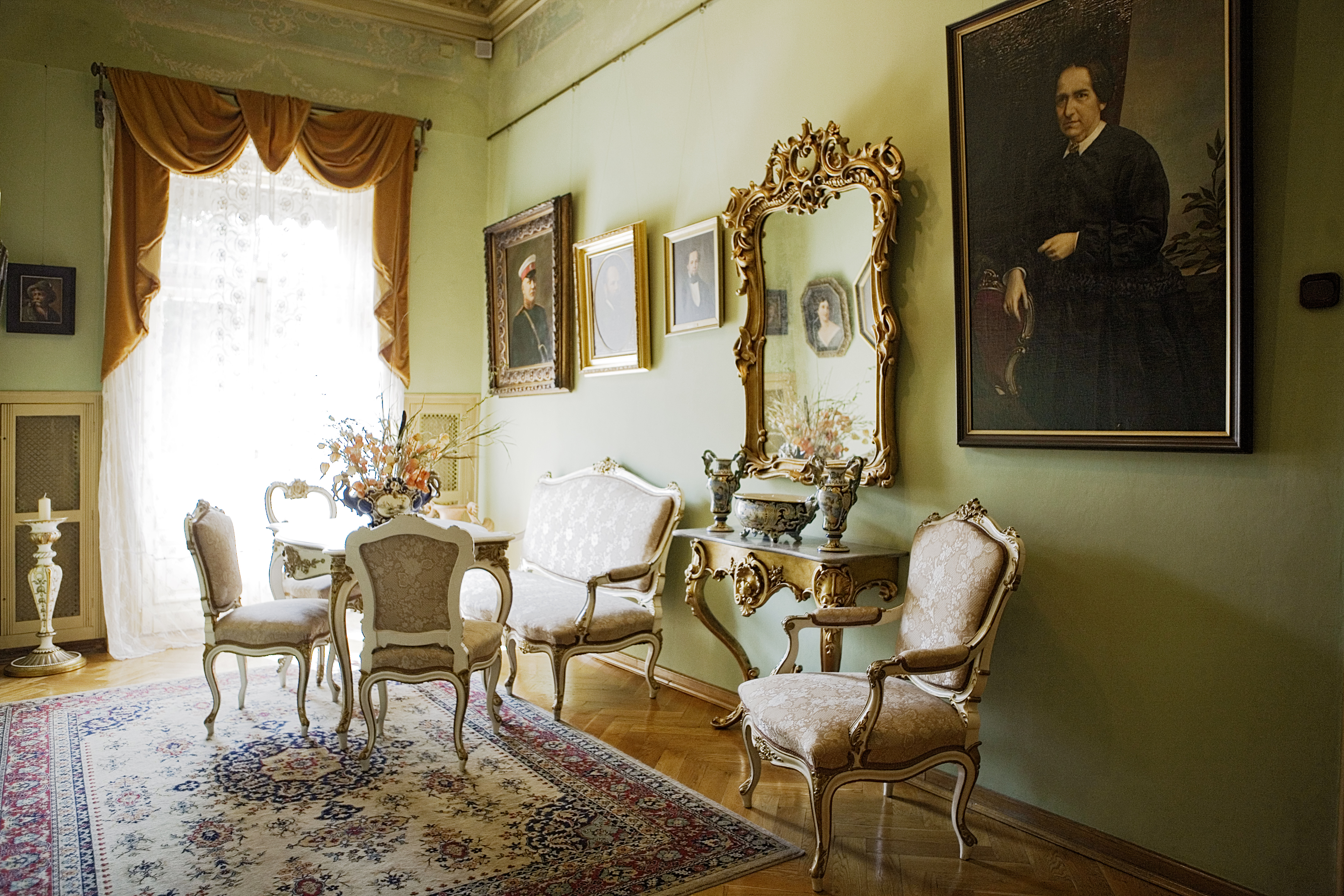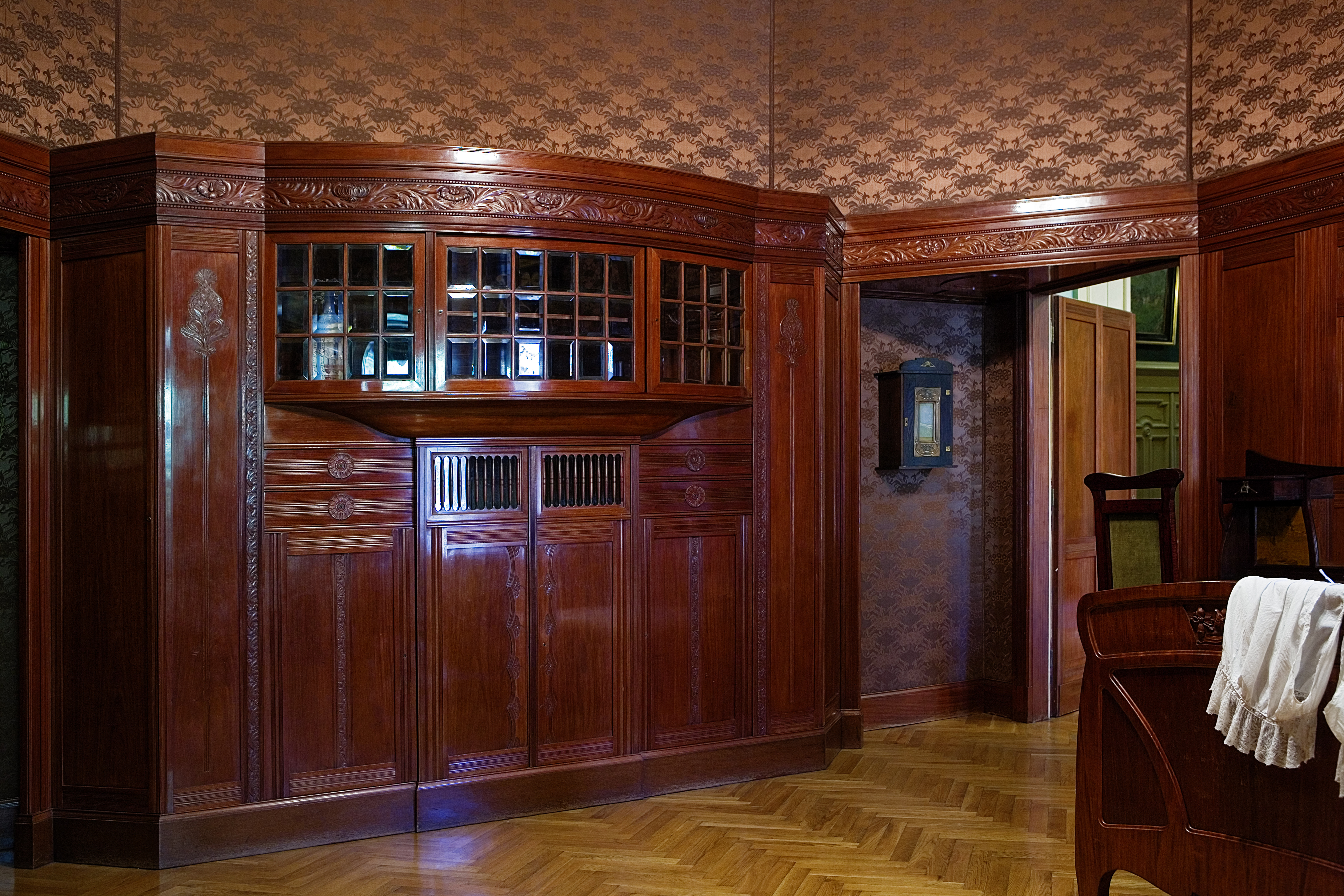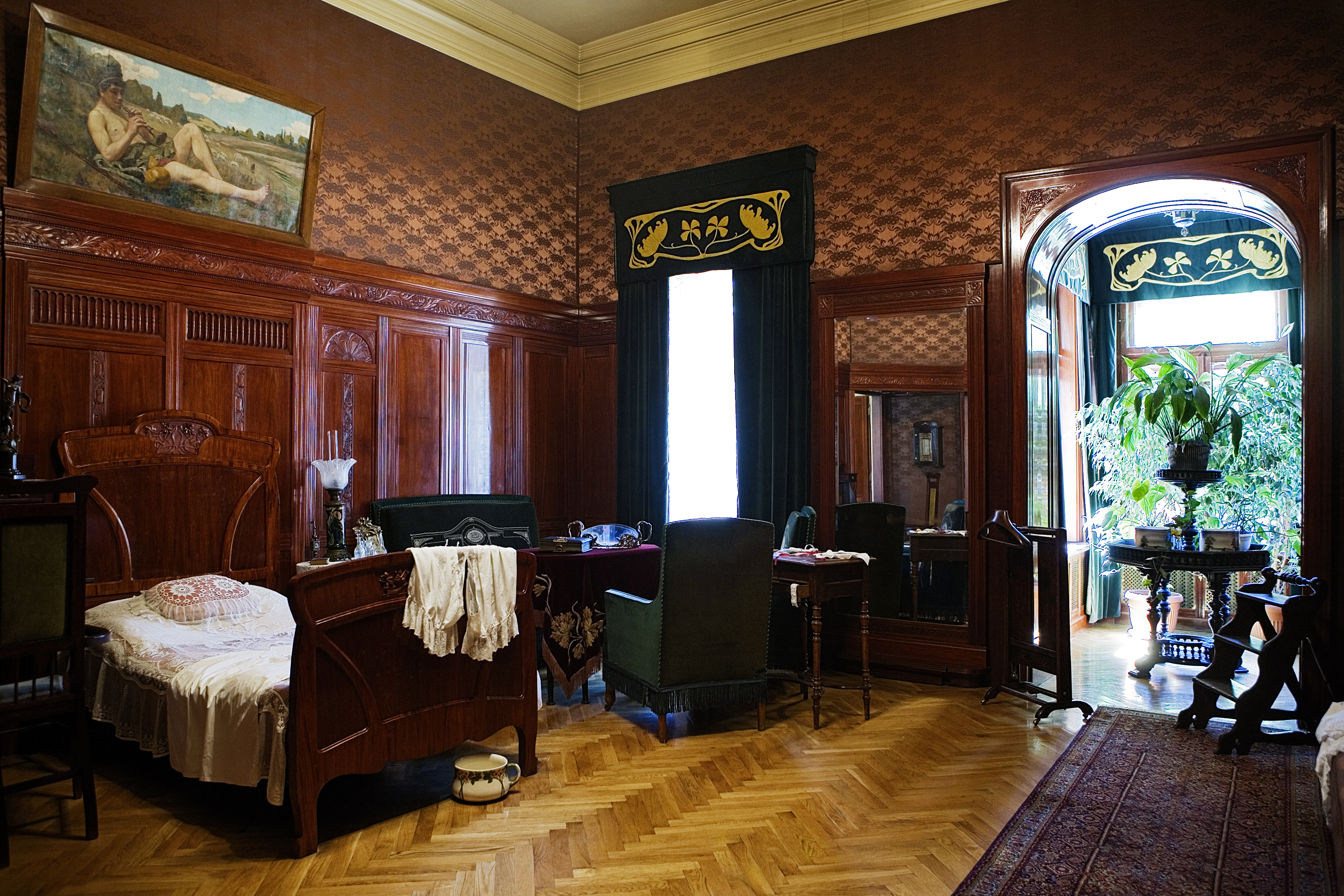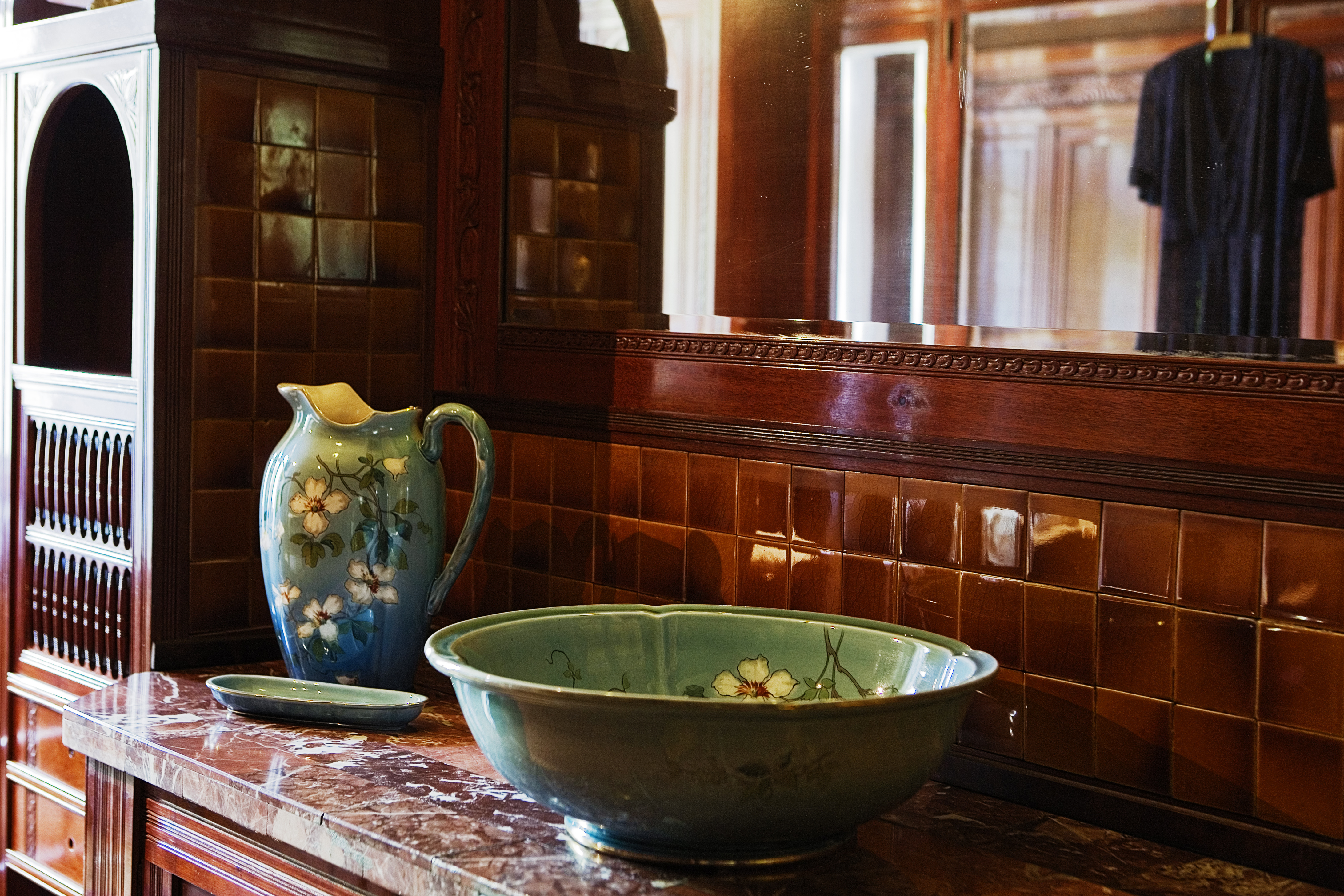29 August 2018
Lounges of the lady of the house
Rooms of the lady of the house. The four enfilade rooms with windows that overlook the garden are part of the residential apartment. They make up a compound of old bedrooms, in which decor worthy of our attention was preserved. The first room is a small boudoir, from which you could go forward into consecutive spaces or go out onto the biggest terrace in the palace. Here we can see outcrops of the original ceiling with Art Nouveau decorations and younger decorations inspired with motifs that were typical of Rococo. The stylistic homogeneity is highlighted by Neo-Rococo furniture in the style of Louis XV, which comes from the original furnishings of the Palace. To the left of the boudoir, there is a room which originally could have performed the function of an additional bedroom or a private lounge of the lady of the house, Leonia Poznańska. It is dominated by subtle, delicate colours, broken down only by a multicoloured chandelier made of Czech glass. Rococo motifs from the upholstery of the ensemble of furniture, presenting idyllic pastoral scenes can testify the constant presence of women in that room. The fête champêtre motif (i.e. a scene of the so-called rural feast, popular in French painting) is also repeated by a charming porcelain figural composition. A subtle coffee service painted in pastel colours could have been a similarly fashionable object, valued by contemporary ladies. It is also worth noting the portières made of plush combined with silk that come from mid-19th century and could originally be found in the bay of the room. Embroidered with golden thread and decorated with applications painted in water colour, together with a collection of paintings, they complement the decor of the room.
To the right of the boudoir, there is a bedroom connected with a dressing room (that function also as a wardrobe). Both rooms have original decor from the early 20th century, which refers to the Art Nouveau style from Berlin. The walls are panelled with mahogany wood, decorated with stylised floral ornament. The furniture is fitted into the wainscoting: linen cupboard with a glazed upper part and wardrobes that opened on two sides and, at the same time, separated the bedroom from the dressing room. A mirror with a settee situated between the wardrobes and an ensemble of furniture produced by a company from Dresden complete the decor. Their dark green, plush upholstery match the tasteful blinds with Art Nouveau embroidery. The sophisticated character of the interior is complemented with dainty yet recherché objects, such as clock, vase or photo frame. It is also worth noting the elegant functional elements of the room, such as the needlework organiser, called niciak in Polish, Art Nouveau-style medicine chest or chamber pot.
The dining room, in turn, is a narrow room with a high mirror placed between the wardrobes and two smaller dressing tables opposite. In the past, there was a washbowl between them. On the small table in the centre, one can find women’s sundries, such us lace gloves, small mirror, brush or fan. From the dressing room, through a mirrored door, one could go to the toilet and the bathing room, on whose vaulting there are still remains of polychrome preserved.
Lounges of the lady of the house
Rooms of the lady of the house. The four enfilade rooms with windows that overlook the garden are part of the residential apartment. They make up a compound of old bedrooms, in which decor worthy of our attention was preserved. The first room is a small boudoir, from which you could go forward into consecutive spaces or go out onto the biggest terrace in the palace. Here we can see outcrops of the original ceiling with Art Nouveau decorations and younger decorations inspired with motifs that were typical of Rococo. The stylistic homogeneity is highlighted by Neo-Rococo furniture in the style of Louis XV, which comes from the original furnishings of the Palace. To the left of the boudoir, there is a room which originally could have performed the function of an additional bedroom or a private lounge of the lady of the house, Leonia Poznańska. It is dominated by subtle, delicate colours, broken down only by a multicoloured chandelier made of Czech glass. Rococo motifs from the upholstery of the ensemble of furniture, presenting idyllic pastoral scenes can testify the constant presence of women in that room. The fête champêtre motif (i.e. a scene of the so-called rural feast, popular in French painting) is also repeated by a charming porcelain figural composition. A subtle coffee service painted in pastel colours could have been a similarly fashionable object, valued by contemporary ladies. It is also worth noting the portières made of plush combined with silk that come from mid-19th century and could originally be found in the bay of the room. Embroidered with golden thread and decorated with applications painted in water colour, together with a collection of paintings, they complement the decor of the room.
To the right of the boudoir, there is a bedroom connected with a dressing room (that function also as a wardrobe). Both rooms have original decor from the early 20th century, which refers to the Art Nouveau style from Berlin. The walls are panelled with mahogany wood, decorated with stylised floral ornament. The furniture is fitted into the wainscoting: linen cupboard with a glazed upper part and wardrobes that opened on two sides and, at the same time, separated the bedroom from the dressing room. A mirror with a settee situated between the wardrobes and an ensemble of furniture produced by a company from Dresden complete the decor. Their dark green, plush upholstery match the tasteful blinds with Art Nouveau embroidery. The sophisticated character of the interior is complemented with dainty yet recherché objects, such as clock, vase or photo frame. It is also worth noting the elegant functional elements of the room, such as the needlework organiser, called niciak in Polish, Art Nouveau-style medicine chest or chamber pot.
The dining room, in turn, is a narrow room with a high mirror placed between the wardrobes and two smaller dressing tables opposite. In the past, there was a washbowl between them. On the small table in the centre, one can find women’s sundries, such us lace gloves, small mirror, brush or fan. From the dressing room, through a mirrored door, one could go to the toilet and the bathing room, on whose vaulting there are still remains of polychrome preserved.

